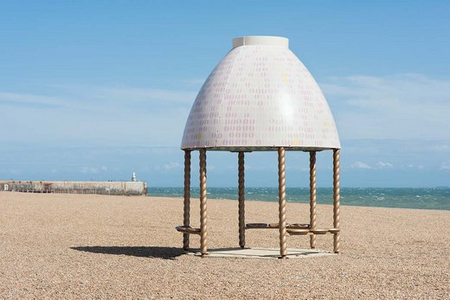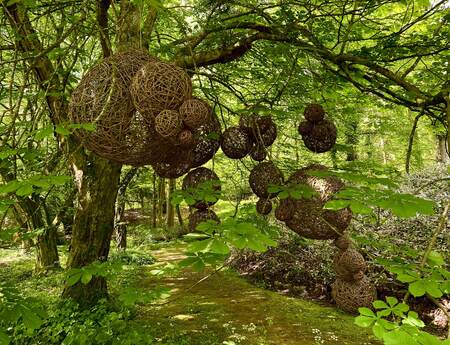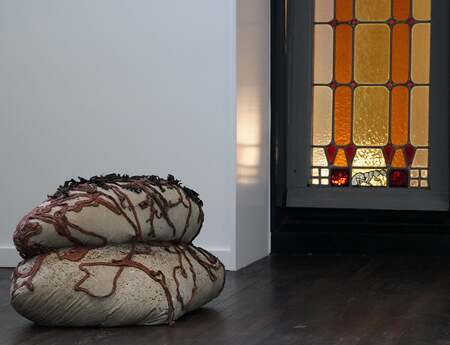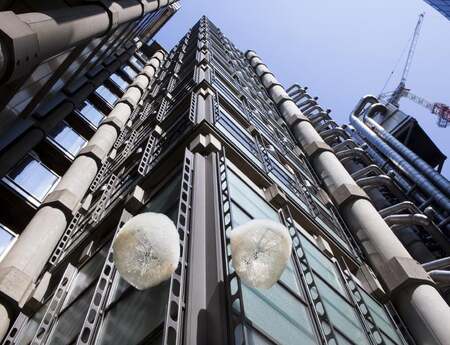Folkstone Triennal
Balancing cultural, social and political anxieties through contemporary creativity
“Some people may like it, some others may hate it – art needs people to interpret it in different ways.” Lewis Bigg. The fourth Folkestone Triennial was presented from 2nd of September to 5th of November 2017 with the theme “The Double Edge”.
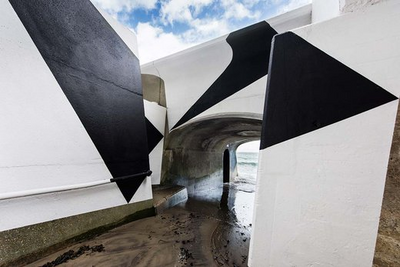
Folkestone Triennial is one of the most ambitious exhibitions of contemporary art outside the gallery context presented in the UK. Founded in 2008, the Triennial takes place every three years and has become one of the 5 key projects of the Creative Foundation. With the projects Triennial, Creative Quarter, Quarterhouse, Book Festival and Artworks the independent arts charity is dedicated to promoting the regeneration of Folkestone through creative activity. Folkestone, once a simple fishing village on the south-east coast of the English Channel, is well known as end of the Eurotunnel and starting point of the M20 highway to London. Artists commissioned to take part in previous Triennials include Cornelia Parker, Tracey Emin, Jeremy Deller, Martin Creed, Mark Wallinger, Christina Iglesias, Richard Wilson, Yoko Ono, Pablo Bronstein, Andy Goldsworthy and Michael Sailstorfer.
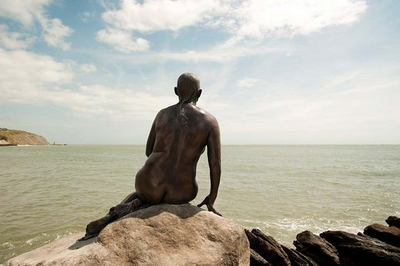
Under the title ‘Double Edge’, the Triennial is curated by Lewis Biggs for the second time. The concept of this year’s edition further develops the inquiry into ‘sense of place’ that guided Folkestone Triennial exhibition “Lookout” in 2014. “Double Edge” refers to the two main axes around which Folkestone’s development as a town has taken place geographically and historically. For the first part it is bounded by the seashore and divided by the Pent Brook into an eastern and a western part. For the second part it refers to an expression of the world in general and Folkestone as a microcosm within this world. As Biggs declared “Double Edge” plays with two different meanings. The first of these is anxiety - fear located at the rim of the world, fear at the verge of the future and fear of the unknown. The second is the notion of inner balance, released through the artist’s imagination when one tips over the edge and looks back on the known with a different perspective. Great art is a mirror to the world and this exhibition gives artists the opportunity to make new work that plays with ambiguity and stimulates viewers to consider broader issues such as why the world is the way it is, how it might be and how it is possible to change it.” The title resonates with major contemporary cultural, economic and political realities experienced as part of everyday lives: migration, border controls, wealth inequality, sustainability, a challenging urban environment and climate change.
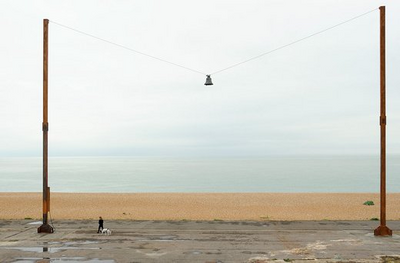
Over 20 artists have been invited to engage with the town’s various narratives and material memories drawn from the its social, cultural, political and economic history. All artworks are commissioned with the ambition of positively affecting the urban ecology of the town as a place to live, work, visit and study. Some of the artworks will become part of the town’s permanent collection built up since the first edition of the Triennial in 2008.
Artists commissioned in 2017 were: Rigo 23, Sol Calero, Michael Craig-Martin, Antony Gormley, Alex Hartley, Lubaina Himid, Emily Peasgood, Diane Dever and The Decorators, Amalia Pica, Marc Schmitz and Dolgor Ser-Od, David Shrigley, Bob and Roberta Smith, Sinta Tantra, Studio Ben Allen, Nomeda and Gediminas Urbonas, HoyCheong Wong, Gary Woodley, Bill Woodrow, Richard Woods, and Jonathan Wright.
More informations:
www.folkestonetriennial.org.uk
